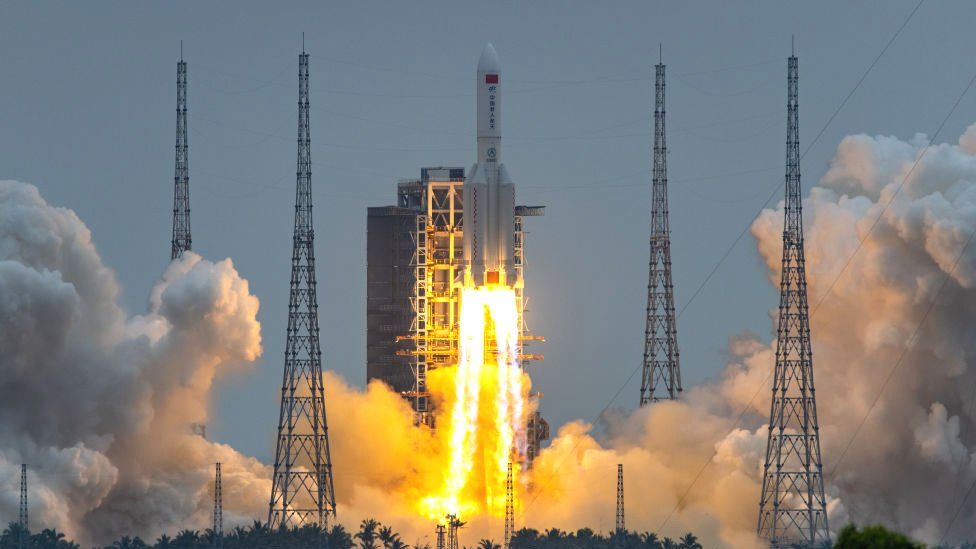BBC: Debris from a Chinese rocket is expected to fall back to Earth in an uncontrolled re-entry this weekend.
The main segment from the Long March-5b vehicle was used to launch the first module of China’s new space station last month.
At 18 tonnes it is one of the largest items in decades to have an undirected dive into the atmosphere.
The US on Thursday said it was watching the path of the object but currently had no plans to shoot it down.
“We’re hopeful that it will land in a place where it won’t harm anyone,” US Defense Secretary Lloyd Austin said. “Hopefully in the ocean, or someplace like that.”
Various space debris modelling experts are pointing to late Saturday or early Sunday (GMT) as the likely moment of re-entry. However, such projections are always highly uncertain.
Originally injected into an elliptical orbit approximately 160km by 375km above Earth’s surface on 29 April, the Long March-5b core stage has been losing height ever since.
Just how quickly the core’s orbit will continue to decay will depend on the density of air it encounters at altitude and the amount of drag this produces. These details are poorly known.
China has bridled at the suggestion that it has been negligent in allowing the uncontrolled return of so large an object. Commentary in the country’s media has described Western reports about the potential hazards involved as “hype” and predicted the debris will likely fall somewhere in international waters.
The Global Times quoted aerospace expert Song Zhongping who added that China’s space monitoring network would keep a close watch and take necessary measures should damage occur.
But the respected cataloguer of space activity, Jonathan McDowell from the Harvard-Smithsonian Center for Astrophysics, US, said the situation did reflect poorly on China.
“It is indeed seen as negligence,” he told BBC News.
“This is the second launch of this rocket; the debris in Ivory Coast last year was from the previous launch, i.e. a basically identical rocket.
“These two incidents [the one now and the Ivory Coast one] are the two largest objects deliberately left to re-enter uncontrolled since Skylab in 1979.”
Fragments of the US space station Skylab scattered across Western Australia in 1979, attracting worldwide attention.
Hugh Lewis, who models space debris at Southampton University, UK, noted that more than 60 years of spaceflight had left a large legacy of junk in orbit. The responsibility for this litter rests on several countries, but principally Russia and the US.
“It’s worth remembering that there are approximately 900 orbital rocket stages in low-Earth orbit, left behind by nearly every launch-capable nation and with a combined mass orders or magnitude greater than the one expected to re-enter the atmosphere this [weekend],” Dr Lewis posted on Twitter.
Modern practice now calls for rocket stages to be de-orbited as soon as possible after their mission. In the case of large core segments, these would normally come straight back, within one orbit, falling into the ocean or on land (the US company SpaceX now propulsively lands its core stages so they can be used again).
For upper-stages that go into an orbit and may travel around the globe several times as they precisely position a payload, the preference is to include a re-ignitable engine that can steer the stage into a return at the earliest opportunity.
Usually, this would be over an ocean – potentially in the furthest place from land in the South Pacific, between Australia, New Zealand and South America.
Over an area of approximately 1,500 sq km (580 sq miles), this region is a popular graveyard of rocket elements and defunct satellites, where the remains of around 260 missions are thought to be scattered on the ocean floor.
